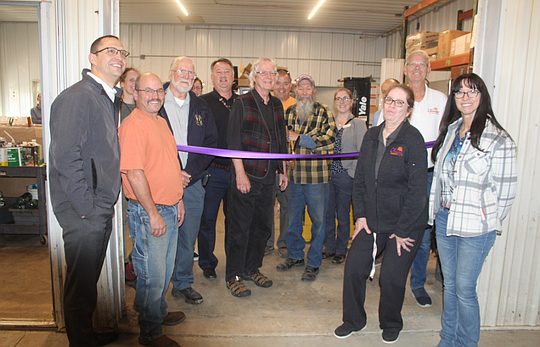February 14, 2020 at 9:33 a.m.
The meeting is part of a process required in Minnesota where offenders are made known to the public if their end of confinement review classifies them to be a “Level Three” offender. The levels are one, two and three and only those who are classified at three are widely public. The law enforcement community can use their discretion on the other level classifications, and usual practice is daycare centers, churches and schools will receive a heads-up on an offender residency.
There won’t ever be a notification for a juvenile-aged offender or for any offender who went straight onto probation and was not incarcerated.
Brad Vandervegt, with the MN Dept. of Corrections, explained how there are 83 offenders required to register with their agents who are living in Chisago County and just one offender is Level Three. In North Branch alone there are 27 registered offenders. Chief of Police Dan Meyer told the Press many of them don’t have a level designation, because they went straight to probation, never exited incarceration and never underwent an “end of confinement review.” These offenders are required to let local police know where they live, work, etc. but are not subject to public notification.
For this particular offender, Vandervegt said the goal is “broad awareness” because “...a well-informed community is a safer community.”
The Level Three offender, Jonathan Matthew Croy, is on lifetime conditional release after having served sentences for third degree, first degree and fourth degree criminal sexual convictions. His history is with female teens, the audience was advised.
Croy is employed and since his release on December 4, 2019, has lived elsewhere. When he advised his agents he planned on moving into Lent Township the site was checked out, according to ISP agent Katie Coyour. Specific addresses are not released, but the residence is near to County Road 14 and the Lent-North Branch boundary.
Agent Coyour explained Croy has a global positioning system (GPS) on his person, plus the department can monitor his Internet activity, access his photos, websites, even check text messages.
The ideal offender integrates successfully back into society and does not re-offend, which Vandervegt said is the case with 90 percent of thousands of offender cases on the registry.
Croy is not supposed to be hanging around minors, so the public is encouraged to call if they see any potential activity that would not comply; during business hours 651-361-7655 will reach the agents or 9-1-1 will alert the local sheriff and police.
The registry of criminal sexual conduct offenders was begun in Minnesota in 1991 and the required community notification on Level Three releases started in 1997.
Being pro-active
A spokesperson with the Jacob Wetterling Resource Center, Jane Straub, reminded the audience about things they can do to decrease sexual predator-related offenses individually. For example, children should know five adults who they feel comfortable going to for help. In the vast majority of cases, the predator is somebody the victim knows; a coach, relative, etc. so there should be several adults a child can reach out to.
Straub said youngsters need to know exactly what to do when someone makes them feel unsafe and that they are able to say no.
Watch for “red flag” behaviors. Kids shouldn’t act afraid around someone. Respect their creep-o-meter, Straub said, if they tell you they don’t like an adult there may be a good reason. While having a conversation don’t judge and ask open ended questions.
Adults who give undue attention, disconnecting a child from their family or social supports should be a concern.
And, tell children they too shouldn’t do things or talk inappropriately to others.
The JWRC has much more information on its website and will take calls and questions. It has speakers and materials available for groups or civic meetings.





Comments:
Commenting has been disabled for this item.